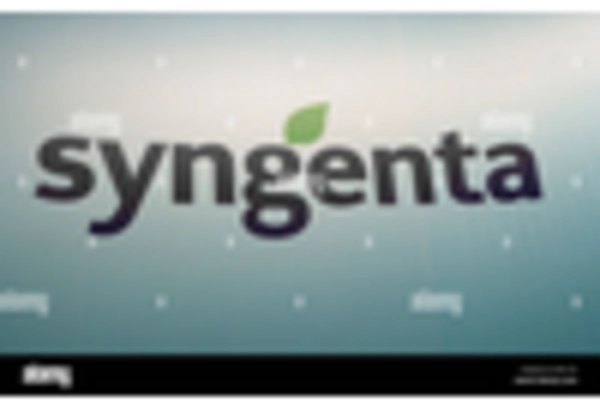Regulatory Support for Biocontrol Products
Regulatory frameworks are increasingly supportive of biocontrol products, which is positively impacting the Biocontrol Market. Governments are recognizing the need for sustainable agricultural practices and are implementing policies that favor the use of biopesticides over synthetic chemicals. Recent legislative changes in several regions have streamlined the approval process for biocontrol agents, making it easier for companies to bring new products to market. This regulatory support is likely to enhance the competitiveness of biocontrol solutions, fostering growth and expansion within the Biocontrol Market.
Consumer Preference for Chemical-Free Agriculture
Consumer preference for chemical-free agricultural practices is significantly influencing the Biocontrol Market. As health-conscious consumers seek out organic and sustainably produced food, the demand for biocontrol solutions is expected to rise. Market analysis indicates that the organic food sector is projected to reach a valuation of over 300 billion dollars by 2025, with biocontrol products playing a crucial role in meeting this demand. This shift in consumer behavior is prompting farmers and producers to adopt biocontrol methods, thereby driving growth and innovation within the Biocontrol Market.
Increasing Awareness of Environmental Sustainability
The Biocontrol Market is experiencing a notable surge in awareness regarding environmental sustainability. As consumers become more conscious of the ecological impact of traditional pesticides, there is a growing preference for biocontrol solutions. This shift is driven by the desire to reduce chemical residues in food and minimize harm to beneficial organisms. According to recent data, the biopesticide segment is projected to grow at a compound annual growth rate of approximately 15% over the next five years. This trend indicates a significant opportunity for companies within the Biocontrol Market to innovate and expand their product offerings, catering to environmentally aware consumers.
Rising Investment in Biocontrol Research and Development
Investment in research and development within the Biocontrol Market is on the rise, as stakeholders recognize the potential of biocontrol agents to address pest challenges. Increased funding from both public and private sectors is facilitating the discovery of new biocontrol products and technologies. For instance, recent reports indicate that R&D expenditures in biopesticides have increased by over 20% in the past year alone. This influx of investment is likely to accelerate innovation and enhance the efficacy of biocontrol solutions, positioning the Biocontrol Market for robust growth in the coming years.
Integration of Biocontrol in Integrated Pest Management (IPM)
The integration of biocontrol methods into Integrated Pest Management (IPM) strategies is becoming increasingly prevalent within the Biocontrol Market. IPM emphasizes the use of multiple control methods to manage pest populations sustainably. This approach not only enhances the effectiveness of pest control but also reduces reliance on chemical pesticides. Data suggests that the adoption of biocontrol agents in IPM programs has led to a reduction in chemical pesticide use by up to 30% in certain agricultural sectors. This trend highlights the potential for biocontrol solutions to play a pivotal role in sustainable agriculture, thereby driving growth in the Biocontrol Market.


















Leave a Comment